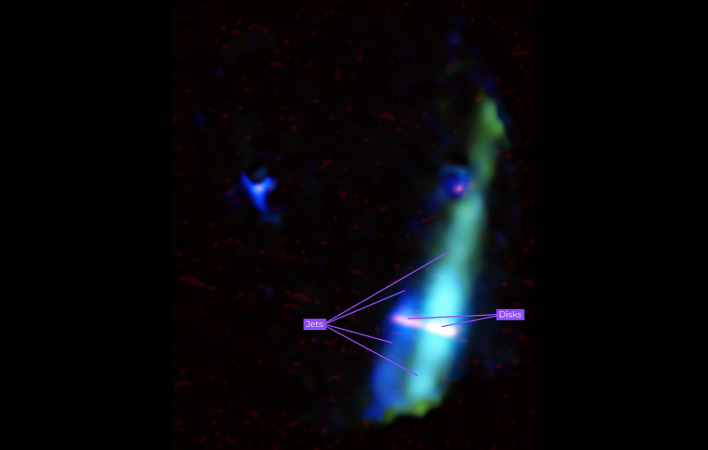This Stunning NASA Twin Star Discovery Leaves Astronomers Slack-Jawed
The astounding discovery made using Webb’s Mid-Infrared Instrument (MIRI) was presented at the 244th meeting of the American Astronomical Society earlier this week, according to NASA. MIRI also found the twin stars have matching jets of gas streaming into space (as seen in the artists concept in image above) from their north and south poles. The twin stars, known as WL 20S, are stars that are believed to have formed 2 to 4 million years ago.
“Our jaws dropped,” remarked astronomer Mary Barsony, lead author of a recent paper describing the results. “After studying this source for decades, we thought we knew it pretty well. But without MIRI we would not have known this was two stars or that these jets existed. That’s really astonishing. It’s like having brand new eyes.”
Adding to the excitement of the new discoveries, additional observations by the Atacama Large Millimeter/submillimeter Array (ALMA) revealed disks of dust and gas encircle both stars, and the possibility of planets forming in those disks. Scientists also believe that the twin stars are nearing the end of the early part of their lives. If so, it will provide them with an opportunity to learn more about how stars transition from youth into adulthood.

Making the discovery even more incredible is the fact that where the twin stars are located, in a star-forming region in the Milky Way known as WL 20S, is that it’s hidden behind thick clouds of gas and dust that block most of the visible light (wavelengths that the human eye can detect) from the stars there, according to NASA. It took Webb’s ability to detect slightly longer wavelengths, called infrared, to pass through those layers of gas and dust and reveal what had been hidden from the eyes of scientists and astronomers since the ‘70s.
“It’s amazing that this region still has so much to teach us about the life cycle of stars,” remarked Ressler. “I’m thrilled to see what else Webb will reveal.”


